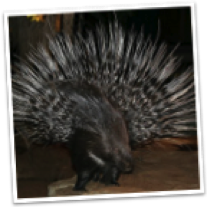

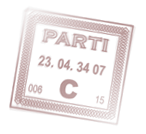



Fast Facts



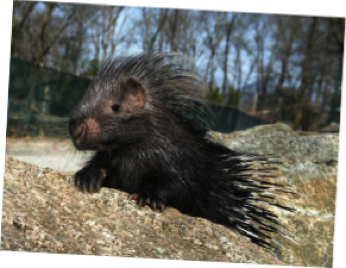
Name: African Crested Porcupine
Scientific: Hystrix Crustata
Family: Hystricidae
Relatives: Cape Porcupine, Malayan Porcupine
Environment: Forest, Grassland
Origin: Africa
Life-span: 15 years
Size: 60 lbs
The African Crested Porcupine, also known as a crested porcupine, is one of the world’s largest rodents. They are common in sub-Saharan Africa, but can be found as far away as northern Africa and Italy.
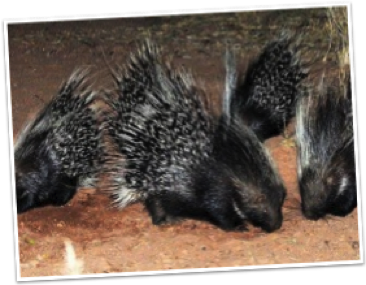

Like other rodents, crested porcupines are nocturnal, and monogamous. Small family groups consisting of a male, female, and their young will live in a complex system of burrows. They are most active at night, leaving their den to forage alone before returning to their group.
Snapshot
1. They do not throw their quills.
2. The quills release on contact or shed off,
and then regrow.
3. Newborn porcupine quills are soft.
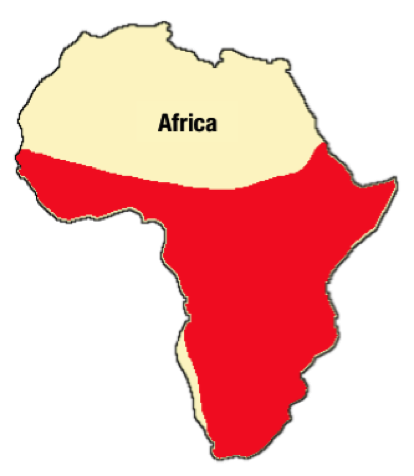
Crested porcupine quills are said to have been an inspiration for the original and new developments to the hypodermic needle.
About Me
Adult African Crested Porcupines can weigh up to 60 pounds, and can grow to 3 feet in length excluding their tail. They are almost entirely covered with bristle-like guard hair, in addition to having quills from the head to their tail. The quills are a variety of lengths with the longest growing almost 1 foot in length. Crested porcupines do not throw their quills. When they are feeling disturbed, they will flare their frontmost quills up and stomp their feet. Some of the tail quills can be shaken against each other, making a rattling noise to help warn off predators. If a threat continues to advance towards a porcupine they will turn and back towards it, thrusting their quills. When the quills make contact, they are easily released from the porcupine’s skin and then eventually grow back. It is not painful for a crested porcupine to lose their quills, often they will shed and regrow like human hair. Unlike the porcupines in North America, the crested porcupines' quills are not barbed. Instead, they are sharp at one end, have microscopic ridges along the shaft, and are almost completely hollow.
Baby African crested porcupine are well-developed at birth. When they are born, porcupettes' eyes are open, their front teeth are developed, and their quills are soft. Their quills will begin to harden at about 2 weeks of age. As the porcupettes grow, they begin to forage for food while still nursing milk from the mother. Crested porcupines live on the ground in the grasslands, forests and rocky outcrops of Africa. Their diet consists of mostly plants and roots, but they may also eat insects and small vertebrae. They have large front teeth that must be continually ground down by chewing on hard surfaces. At night, the porcupine will collect bones to chew on for their teeth and to get calcium.
Economics
Meat from the African crested porcupine, much like other rodents, is considered a delicacy in Kenya and other parts of Africa. Some African tribal people use their guard hairs and quills for ceremonial clothing including masks, vests, jewelry, and totems. The quills may be used whole, creating large sweeping displays, or cut into smaller beads that can be sew onto fabric. Because the crested porcupine’s quills shed naturally often, collecting them for ornamentation is fairly easy. Throughout history, people have used porcupine quills dipped in ink to write on parchment. Now, people still use quills, but now they put the parts of a ballpoint pen into the hollow quill. The quills are lightweight, and will float on water. People use the quills as bobbers on their fishing lines to indicate when a fish has taken the bait.
African crested porcupine are labeled as “least concerned”, meaning they are not threatened on the IUCN Red List. They are considered a nuisance by many farmers, often destroying crops and trees. Hunting the crested porcupine is illegal in Europe. In Morocco however, parts of the porcupine are sold and used in traditional medicines and spiritual rituals.



